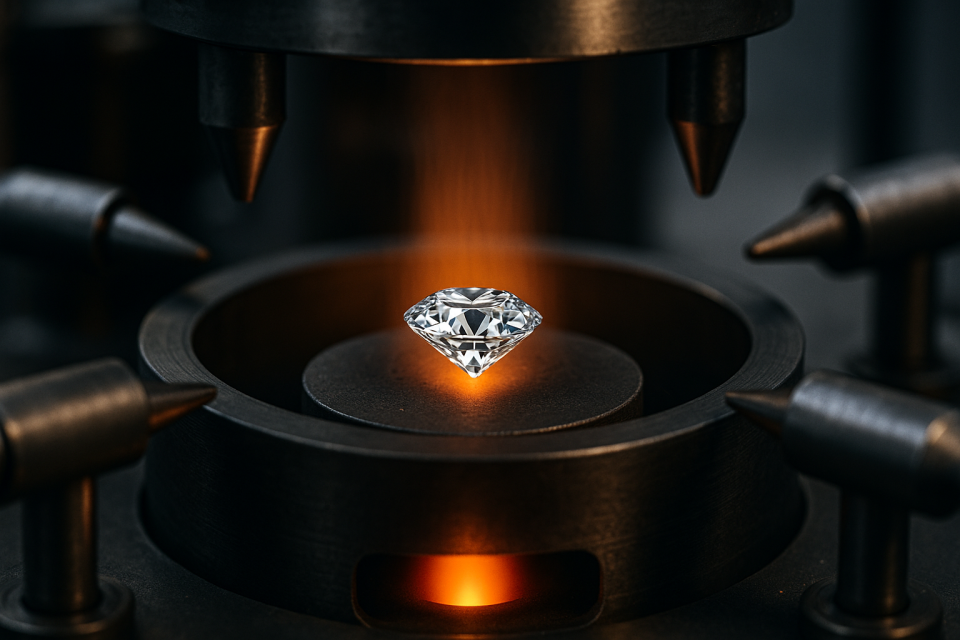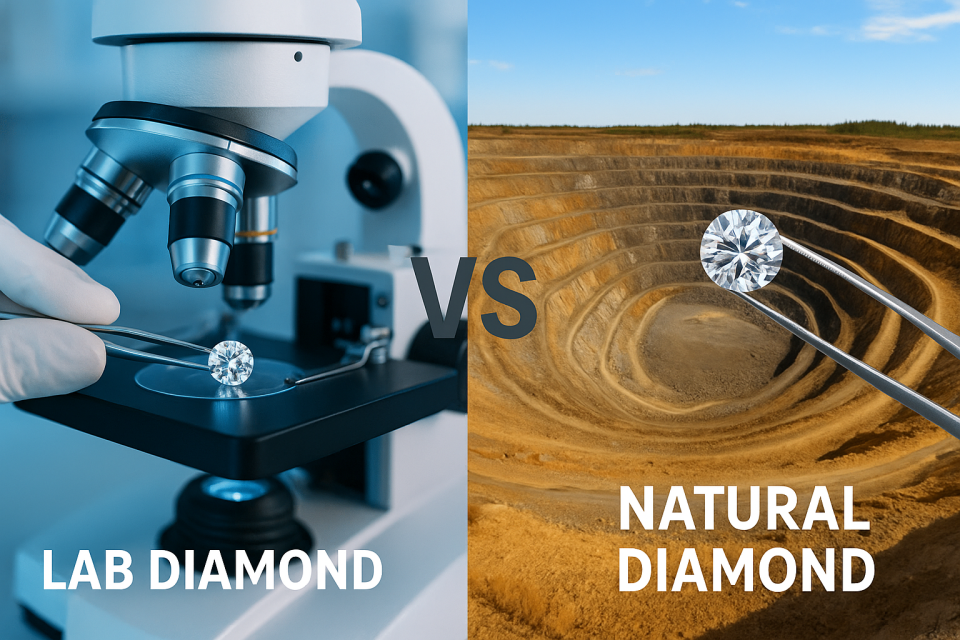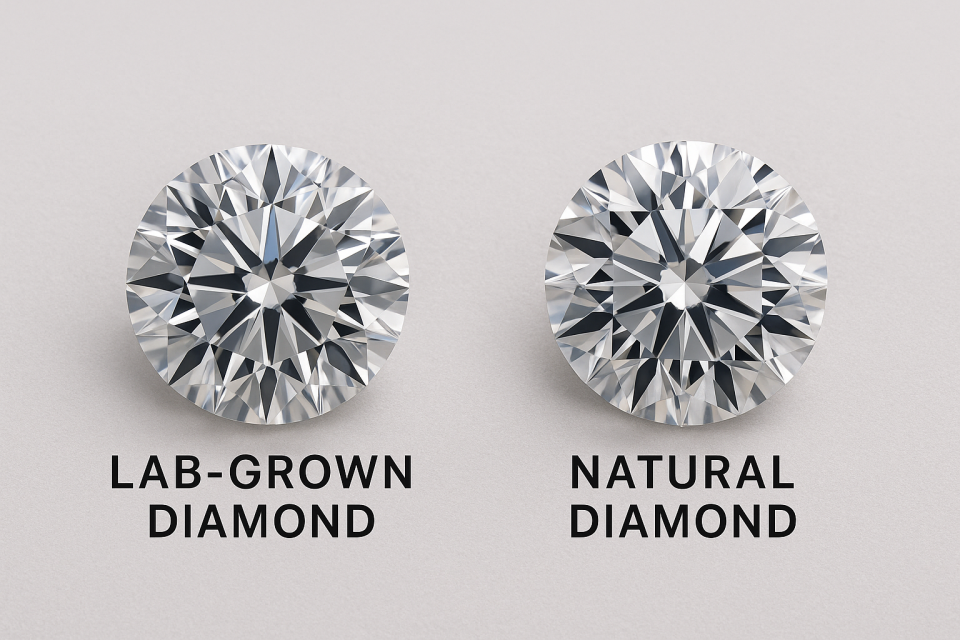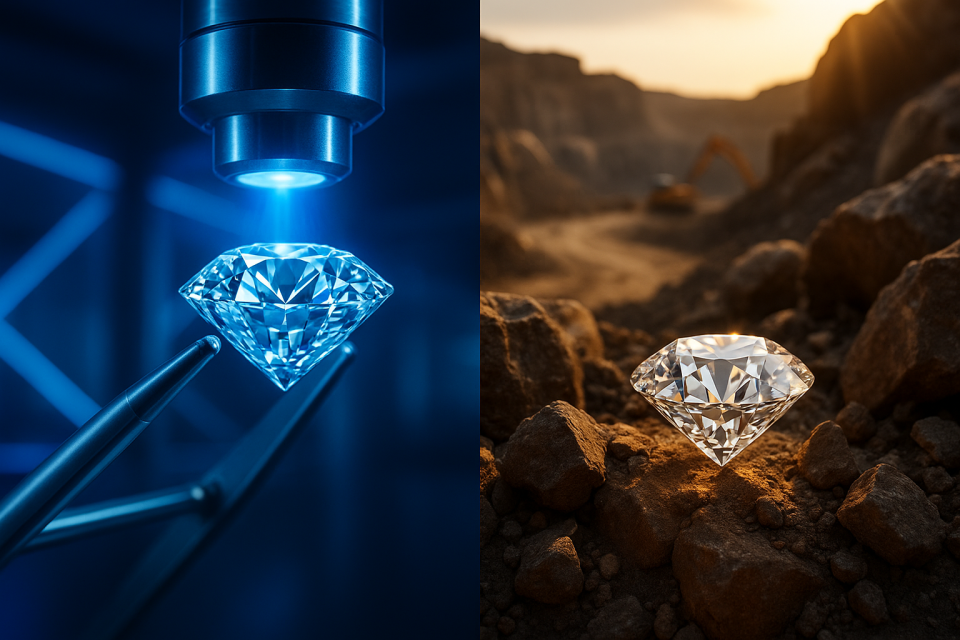Diamonds: The Ultimate Symbol of Love and Luxury
Diamonds have long been regarded as a symbol of eternal love, strength, and status. For decades, natural diamonds have dominated engagement rings and fine jewelry. However, with advancements in technology, lab-grown diamonds have emerged as a sustainable, ethical, and cost-effective alternative.
But here’s the question on everyone’s mind: Can you really tell the difference between a lab-grown diamond and a natural one? The answer might surprise you.

How Are They Made?
Natural Diamonds
Natural diamonds are formed deep within the Earth’s mantle under extreme heat and pressure over billions of years. They are then brought to the Earth’s surface through volcanic activity and mined from the earth.
Lab-Grown Diamonds
Lab-grown diamonds are produced in controlled laboratory environments using two main techniques:
- High Pressure High Temperature (HPHT) – mimics the natural conditions under which diamonds form in the Earth.
- Chemical Vapor Deposition (CVD) – uses carbon-rich gases to deposit diamond layers on a substrate, gradually building a crystal identical to natural diamond.
Key takeaway: Both natural and lab-grown diamonds are made of pure carbon arranged in the same crystal lattice structure.

Physical and Chemical Properties: Are They Really the Same?
Yes. Both types of diamonds share identical:
- Hardness: 10 on the Mohs scale.
- Refractive Index: Producing the same brilliance and fire.
- Chemical Composition: Pure carbon crystal.
Even experienced jewelers cannot distinguish them with the naked eye. Only advanced gemological instruments can detect subtle differences like growth patterns or trace elements unique to lab-grown processes.

Price Difference: The Game-Changer
One of the most significant differences lies in price.
- Natural Diamonds: Mined diamonds are expensive due to rarity, mining costs, and distribution channels.
- Lab-Grown Diamonds: Often 30%–50% cheaper for the same size and quality because supply is not constrained by nature.
For buyers who want larger stones or higher clarity at the same budget, lab-grown diamonds are incredibly attractive.
Ethical and Environmental Considerations
Natural Diamonds
- Environmental impact: Large-scale mining disrupts ecosystems and consumes significant energy and water.
- Ethical concerns: Although “conflict diamonds” are now better regulated, historical issues have damaged trust.
Lab-Grown Diamonds
- Environmentally friendly: No mining, significantly lower carbon footprint (especially if powered by renewable energy).
- Ethical sourcing: Free from conflict and human rights concerns common in traditional diamond supply chains.
Resale Value and Perception
Natural diamonds traditionally hold higher resale value due to established market demand and rarity perception. Lab-grown diamonds are newer and may have lower resale values as the market is still maturing.
However, as consumer values shift toward sustainability and affordability, lab-grown diamonds are rapidly gaining mainstream acceptance.
Which Should You Choose?
- Choose Natural Diamonds If: You value long-term resale or heirloom potential and prefer the emotional allure of a naturally formed gem billions of years old.
- Choose Lab-Grown Diamonds If: You want a larger or higher-quality diamond at the same budget, prioritize ethical sourcing and environmental sustainability, and focus on beauty and symbolism rather than geological origin.
Conclusion
When it comes to appearance and durability, lab-grown and natural diamonds are virtually identical. The real differences lie in cost, sustainability, and ethics.
If your priority is value, ethics, and modern innovation, lab-grown diamonds are an excellent choice. If you want a natural wonder of the Earth with historical significance, natural diamonds remain unmatched.

